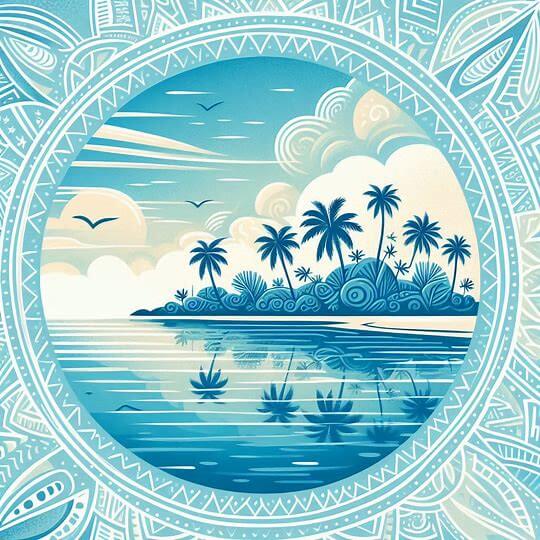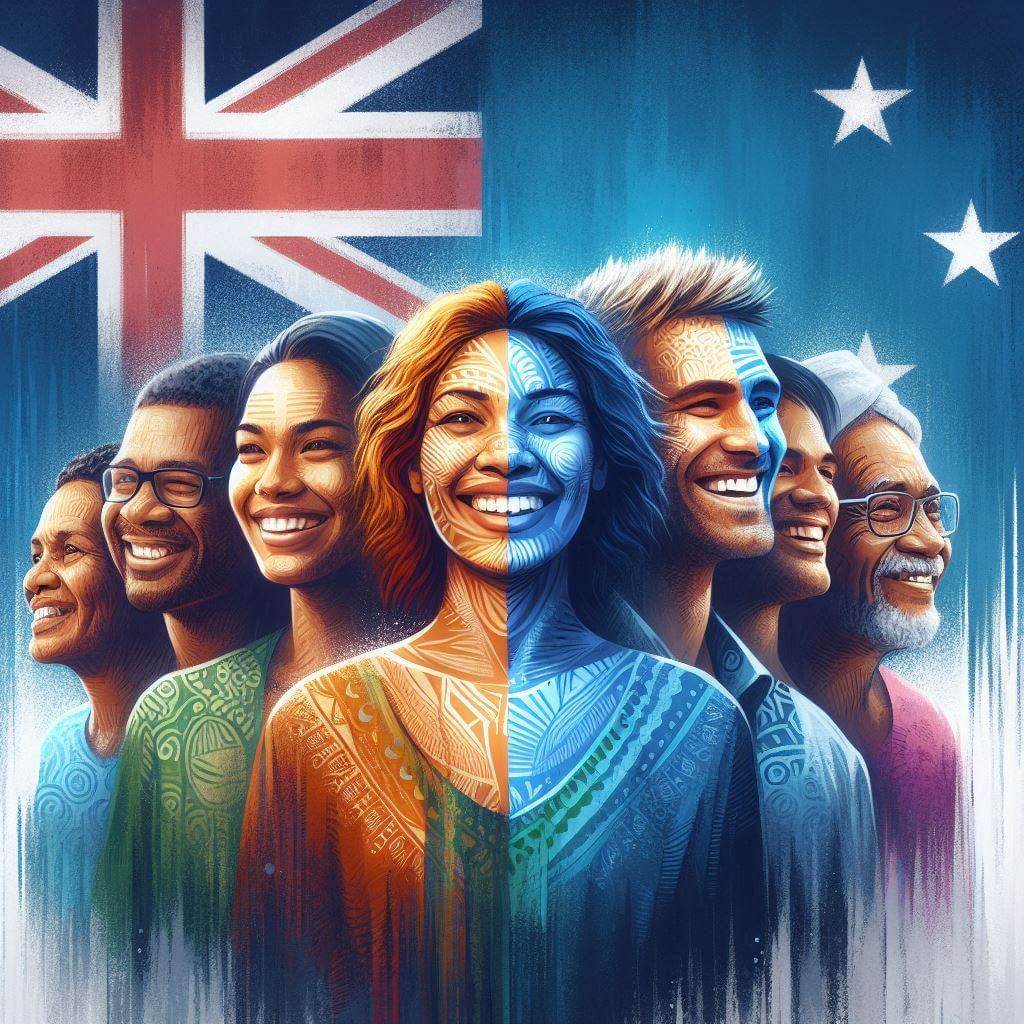The flag of Fiji features a light blue field with the Union Jack occupying the upper hoist quarter (canton) and the shield from the national coat of arms centered in the fly half. This unique design reflects Fiji's complex history, cultural diversity, and natural beauty.
Fiji information
| National Flag Day | — |
| Sovereign state | Yes |
| Official name | Republic of Fiji |
| Capital | Suva |
| Population | 8,934,744 |
| Area | 18,274 km² |
| Currency | Fijian dollar (FJD) |
| Language | English, Fijian, Hindi |
| Continent | Oceania |
| Region | Melanesia |
| Subregion | — |
| Borders | — |
| Timezone | Fiji Time (FJT) UTC+12 |
| Calling code | +679 |
| Top-level domain | .fj |
History of the Fijian Flag
 The current flag of Fiji was officially adopted on October 10, 1970, coinciding with Fiji's independence from British colonial rule. Its design incorporates elements that represent both Fiji's colonial past and its aspirations as a newly independent nation. The retention of the Union Jack reflects Fiji's historical ties to the United Kingdom and its continued membership in the Commonwealth of Nations.
The current flag of Fiji was officially adopted on October 10, 1970, coinciding with Fiji's independence from British colonial rule. Its design incorporates elements that represent both Fiji's colonial past and its aspirations as a newly independent nation. The retention of the Union Jack reflects Fiji's historical ties to the United Kingdom and its continued membership in the Commonwealth of Nations.
Interestingly, the flag has been a subject of debate in recent years. In 2013, the Fijian government announced plans to change the national flag to better reflect Fiji's post-colonial identity. However, after extensive public consultations and deliberations, the decision was made in 2016 to retain the current flag design, acknowledging its historical significance and widespread recognition.
Symbolism and Design of the Fijian Flag
The Fijian flag's design is rich in symbolism, representing various aspects of the nation's identity and natural environment. The light blue field symbolizes the Pacific Ocean, which surrounds the Fijian archipelago and plays a crucial role in the country's geography, economy, and way of life. This azure background also represents the clear skies above Fiji's tropical islands.
The Union Jack in the canton serves as a reminder of Fiji's colonial history and its enduring ties with the United Kingdom. While some view it as a controversial element, others see it as a part of Fiji's complex historical narrative and its place within the Commonwealth.
The shield from the national coat of arms, centered in the fly half, is perhaps the most distinctively Fijian element of the flag. It features several symbols that represent important aspects of Fijian culture and economy:
- The St. George's Cross divides the shield into four quarters, symbolizing Christianity's influence in Fiji.
- The top left quarter features a lion holding a cocoa pod, representing the British royal family's connection to Fiji and the importance of agriculture.
- The top right quarter shows a bunch of bananas, highlighting one of Fiji's key agricultural exports.
- The bottom left quarter displays a dove of peace, symbolizing Fiji's desire for harmony and peaceful coexistence among its diverse population.
- The bottom right quarter shows sugarcane, another crucial crop in Fiji's economy.
- At the base of the shield is a bunch of coconuts, representing the significance of copra in Fiji's traditional and modern economy.
Usage and Significance of the Fijian Flag
 The flag of Fiji is a powerful symbol of national identity and unity. It is prominently displayed on government buildings, schools, and during official ceremonies and national holidays. The flag plays a crucial role in representing Fiji internationally, flying at diplomatic missions, international sporting events, and global forums.
The flag of Fiji is a powerful symbol of national identity and unity. It is prominently displayed on government buildings, schools, and during official ceremonies and national holidays. The flag plays a crucial role in representing Fiji internationally, flying at diplomatic missions, international sporting events, and global forums.
For many Fijians, the flag represents not only their country's sovereignty but also its multicultural heritage. Fiji's population includes indigenous Fijians, Indo-Fijians, and other ethnic groups, and the flag serves as a unifying symbol for all citizens, regardless of their background.
Interesting Facts About the Fijian Flag
- Fiji is one of only four independent countries that retain the Union Jack on their national flag, the others being Australia, New Zealand, and Tuvalu.
- The shade of blue used in the Fijian flag is lighter than that of many other Pacific Island nations, making it easily distinguishable.
- Fiji has a rich tradition of rugby, and the national flag is often seen waving proudly at international rugby tournaments where Fiji competes.
- The flag's design has inspired other official flags in Fiji, including the civil ensign (red background) and the naval ensign (white background with a red cross), both featuring the shield from the national coat of arms.
- Despite debates about changing the flag, many Fijians have expressed strong attachment to the current design, viewing it as an integral part of their national identity and a symbol of Fiji's complex historical journey.